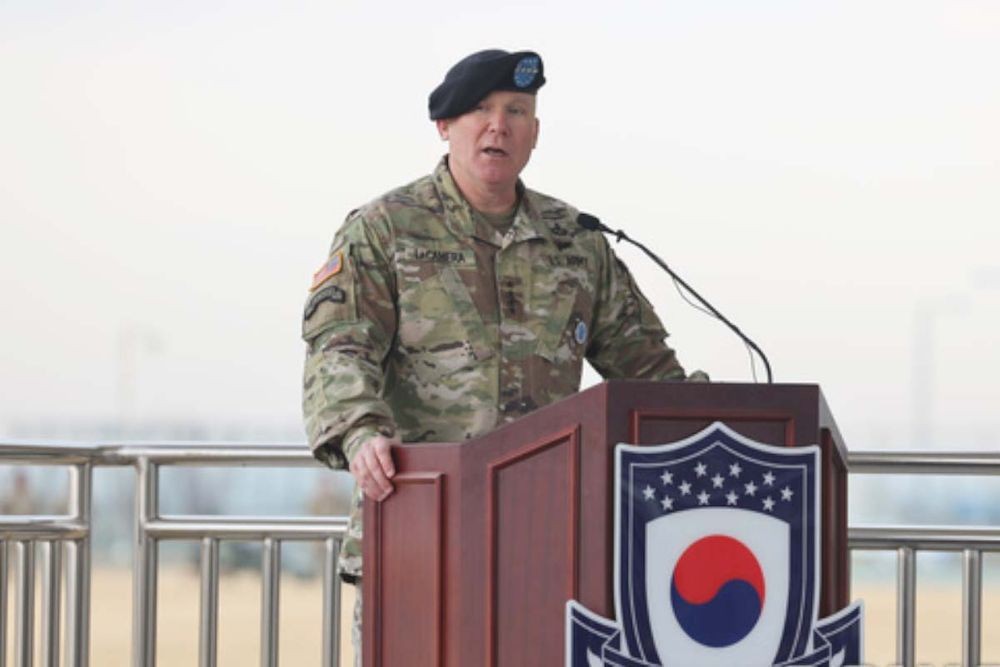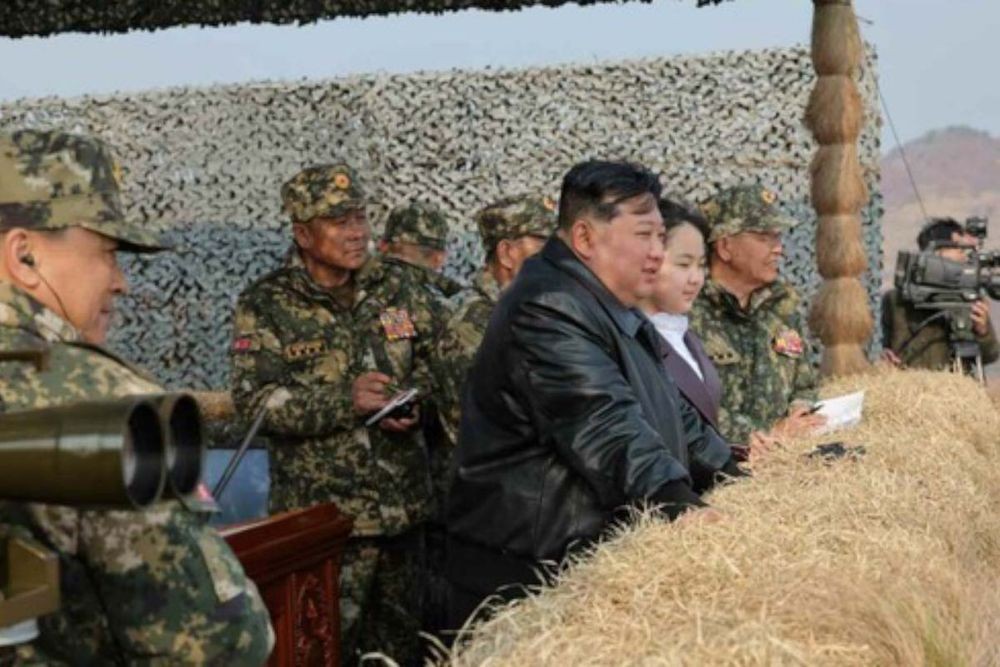Commander Paul LaCamera advocates for the continued presence of U.S. Forces in Korea
Kim Jong Un’s provocations aim to preserve the hereditary regime
North Korea advances by developing and launching hypersonic missiles

Paul LaCamera, the commander of U.S. Forces in Korea, was reported to have attended a hearing at the U.S. House Armed Services Committee, where he delivered remarks. He underscored the imperative of maintaining the current deployment of 28,500 U.S. troops in South Korea and continuing to conduct various exercises on and around the Korean Peninsula, citing North Korea’s military provocations as the rationale.
During the session, Commander LaCamera articulated, “To effectively address challenges posed by North Korea and in the gray zone, it is essential to fortify our physical, mental, and spiritual readiness for wartime scenarios.” He further emphasized, “The United States must persist in allocating resources to sustain the current force level of 28,500 U.S. troops in South Korea for defensive purposes.” Here, “gray zone” refers to situations involving low-intensity provocations rather than large-scale regulated warfare.
Moreover, he cited instances of investment, such as bilateral, trilateral, and multilateral military exercises within and beyond the Korean Peninsula, real and virtual training across various domains, and experiments focusing on next-generation capabilities. He stressed the necessity of maintaining the current deployment and training regimen of U.S. troops in South Korea to address concerns regarding North Korea’s low-intensity provocations.

In a written statement submitted before the hearing, Commander LaCamera also stated, “If a crisis arises in China and Russia, there is a significant possibility that a third country may intervene or exert influence and interference due to geographical proximity to the Korean Peninsula.” He further mentioned that “both China and Russia are cognizant of the fact that the top joint military force of 28,500 U.S. troops is stationed in Korea.” This suggests that the presence and influence of U.S. troops in Korea are essential to deter political and military conflicts instigated by China and Russia.
It is speculated that Commander LaCamera’s remarks were prompted by former President Donald Trump’s efforts to reduce the size of U.S. troops in Korea during his tenure. Analysts suggest that if former President Trump wins the U.S. election in November and returns to power, he may once again raise concerns about the number and deployment of U.S. troops in Korea.
Christopher Charles Miller, a potential candidate for Defense Secretary if Trump is re-elected, emphasized in a recent interview with Dong-a Ilbo, “It is time to have a thorough discussion about whether Korea still requires 28,500 U.S. troops, or if adjustments are needed for the presence of U.S. troops in Korea.” The interview implied pressure regarding the residence of U.S. troops in Korea.
Commander LaCamera attributed Kim Jong Un, Chairman of the State Affairs Commission of North Korea, to continue provoking with ballistic missiles and other weapons of mass destruction, escalating tensions on the Korean Peninsula, citing “the survival of the Kim Jong Un regime as the top priority.” He analyzed North Korea’s actions, stating, “Kim Jong Un is developing missiles and various new weapons necessary for the regime’s survival for the fourth succession while attempting to ease international sanctions. North Korea is preparing to defend its country, and that remains the top priority.

On this day, not only did the commander of the U.S. Forces in Korea continue to make statements at the House hearing, but the commander of the Indo-Pacific Command also contributed to the discussion. John Aquilino, the commander of the U.S. Indo-Pacific Command, forecasted that China would persist in its efforts to enhance and bolster its military capabilities, including nuclear weapons, and would secure the capacity and military size to unify Taiwan by 2027 forcibly.
Commander Aquilino remarked, “Despite the economic slowdown, China is aggressively expanding its military power and continuing ‘gray zone’ operations of modernization and aggressive behavior. All these indications suggest that the Chinese military is executing President Xi Jinping’s directive to prepare for an invasion of Taiwan by 2027.” He elaborated, “China’s actions imply that they possess the military capability to meet Xi Jinping’s preferred timeline for forcibly unifying Taiwan with mainland China.”
However, Commander Aquilino expressed his view on the possibility of China invading Taiwan, stating, “In my opinion, China desires to absorb Taiwan without resorting to war or exerting force. China intends to enhance its military capability in preparation for a scenario where it must forcibly invade Taiwan.”

Meanwhile, North Korea, the focal point of the remarks by the commander of the U.S. Forces in Korea, has been consistently engaging in military provocations.
According to the Rodong Sinmun on March 20th, Kim Jong Un, the General Secretary of the Workers’ Party of Korea and Chairman of the State Affairs Commission, “guided the ground jet test of a solid-fuel engine for a new type of medium- and long-range hypersonic missile.”
The Rodong Sinmun provided detailed coverage of the missile launch pad and type, stating, “On the morning and afternoon of March 19th, the day before the report, a ground jet test was conducted for a multi-stage solid-fuel engine intended for a medium- and long-range hypersonic missile according to North Korea’s planned development schedule for the new weapon system at the Sohae Satellite Launching Station located in Dongchang-ri, Cholsan County, Pyonganbuk-do, under the Missile Total Management Department’s Engine Research Institute.”
It added, “The successful development schedule of our country’s new type of medium- and long-range hypersonic missile weapon system has been confirmed through the success of this significant test.” This is interpreted as a warning that North Korea will soon conduct a test launch of a ‘new type of medium- and long-range hypersonic missile.’










Most Commented